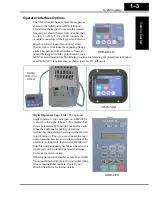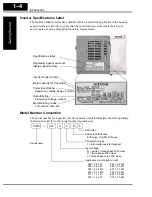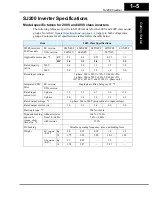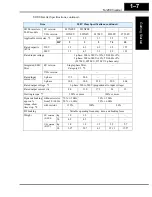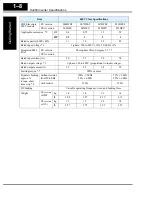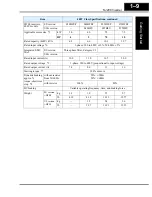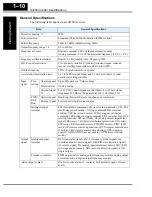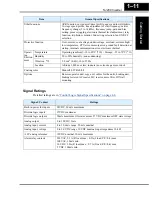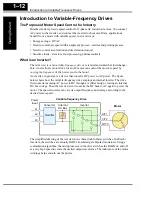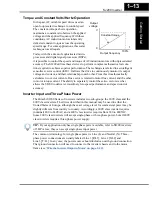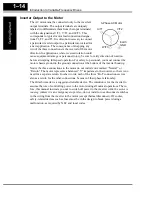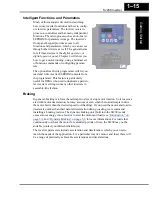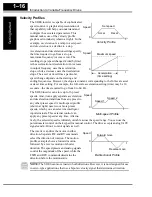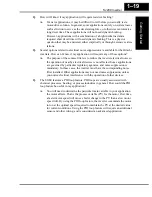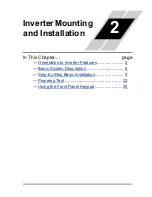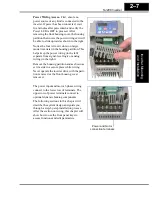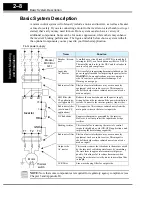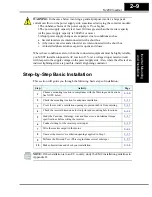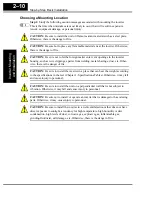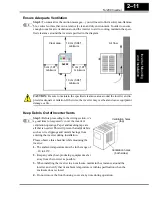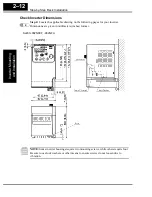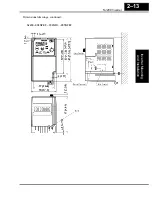
SJ200 Inverter
Getting Star
ted
1–17
Frequently Asked Questions
Q.
What is the main advantage in using an inverter to drive a motor, compared to
alternative solutions?
A.
An inverter can vary the motor speed with very little loss of efficiency, unlike
mechanical or hydraulic speed control solutions. The resulting energy
savings usually pays for the inverter in a relatively short time.
Q.
The term “inverter” is a little confusing, since we also use “drive” and “amplifier”
to describe the electronic unit that controls a motor. What does “inverter” mean?
A.
The terms inverter, drive, and amplifier are used somewhat interchangeably
in industry. Nowadays, the terms drive, variable-frequency drive, variable-
speed drive, and inverter are generally used to describe electronic, micropro-
cessor-based motor speed controllers. In the past, variable-speed drive also
referred to various mechanical means to vary speed. Amplifier is a term
almost exclusively used to describe drives for servo or stepper motors.
Q.
What is the “Intelligent Sensorless Vector Control” feature?
A.
Intelligent Sensorless Vector Control (iSLV) is Hitachi’s newest variable
speed control technology. The original sensorless vector control (SLV) did
not require motor shaft position sensors (thus “sensorless)”, but still required
setting several motor parameters (either manually or through an auto-tuning
procedure). Now, iSLV uses proprietary Hitachi algorithms and high-speed
processing to provide smooth control that adapts to motor characteristics in
real time. Even the need to do auto-tuning procedures has been eliminated.
Q.
Although the SJ200 inverter is a variable speed drive, can I use it in a fixed-speed
application?
A.
Yes, sometimes an inverter can be used simply as a “soft-start” device,
providing controlled acceleration and deceleration to a fixed speed. Other
functions of the SJ200 may be useful in such applications, as well. However,
using a variable speed drive can benefit many types of industrial and
commercial motor applications, by providing controlled acceleration and
deceleration, high torque at low speeds, and energy savings over alternative
solutions.
Q.
Can I use an inverter and AC induction motor in a positioning application?
A.
That depends on the required precision, and the slowest speed the motor will
must turn and still deliver torque. The SJ200 inverter will deliver full torque
while turning the motor at only 0.5 Hz (15 RPM). DO NOT use an inverter if
you need the motor to stop and hold the load position without the aid of a
mechanical brake (use a servo or stepper motion control system).
Q.
Can the inverter be controlled and monitored via a network?
A.
Yes. SJ200 inverters have built-in ModBus communications. See
Appendix B for more information on network communications.

